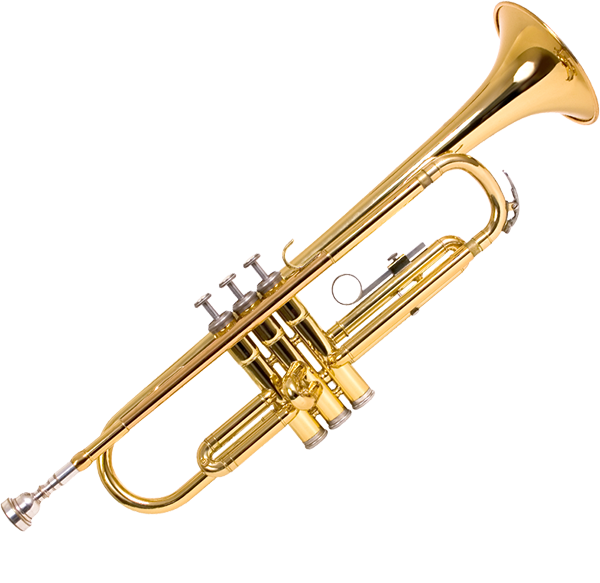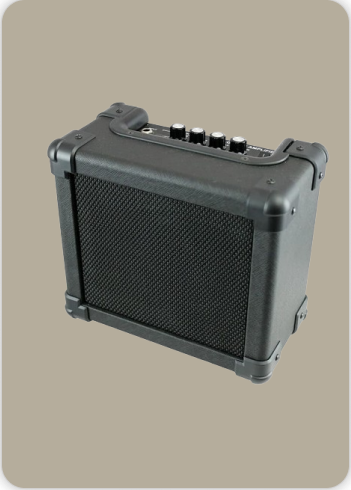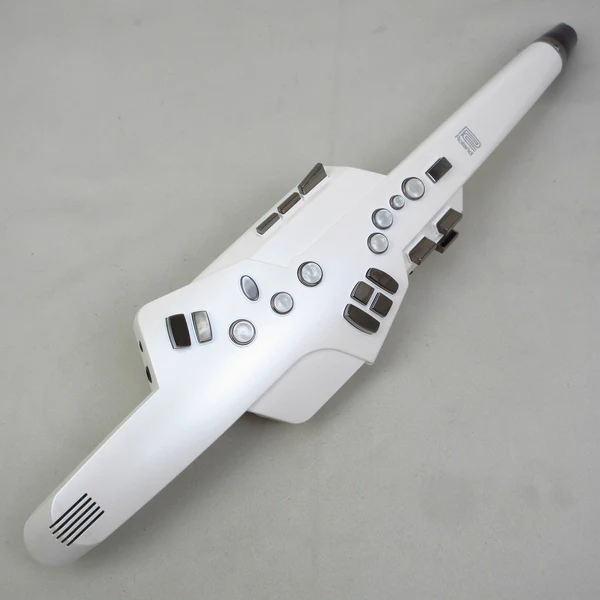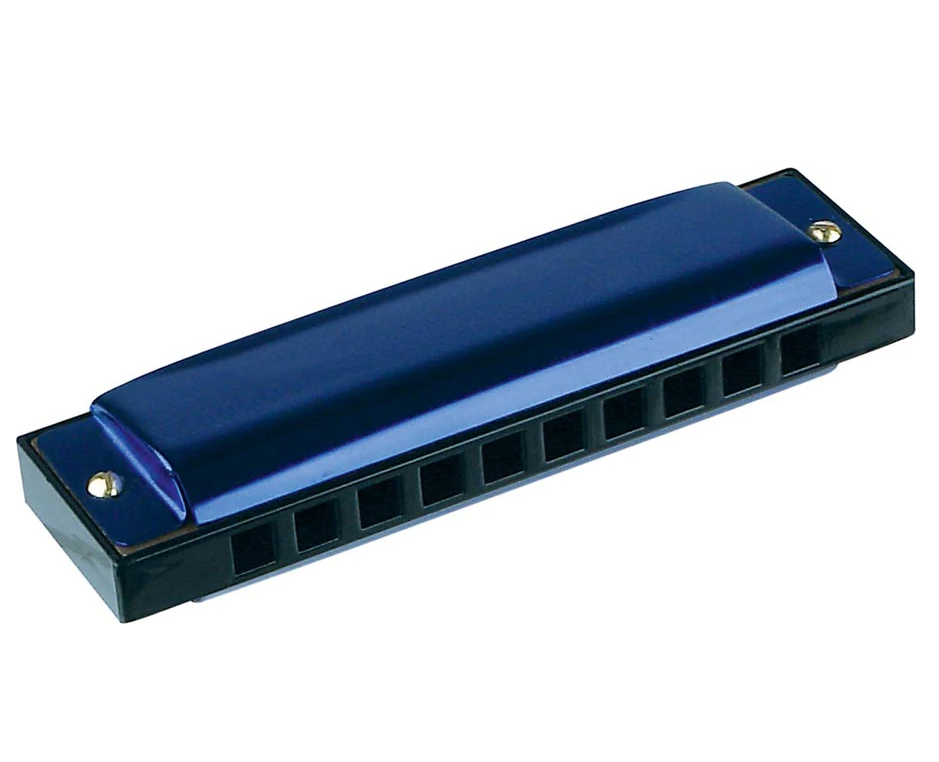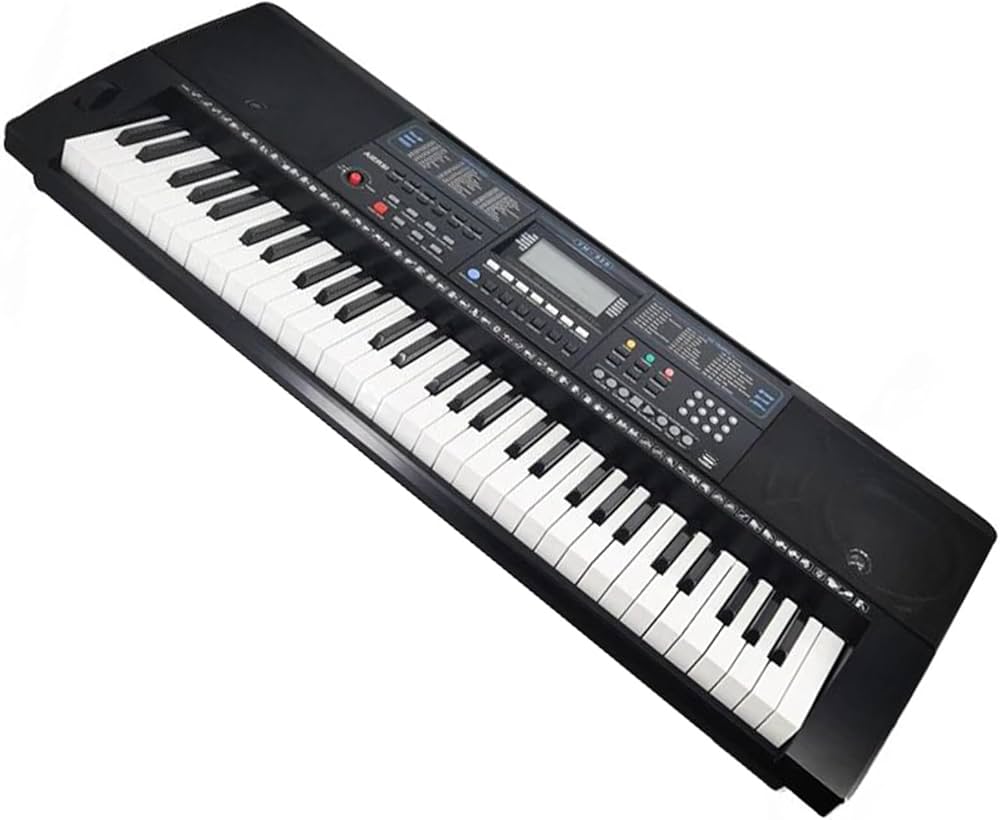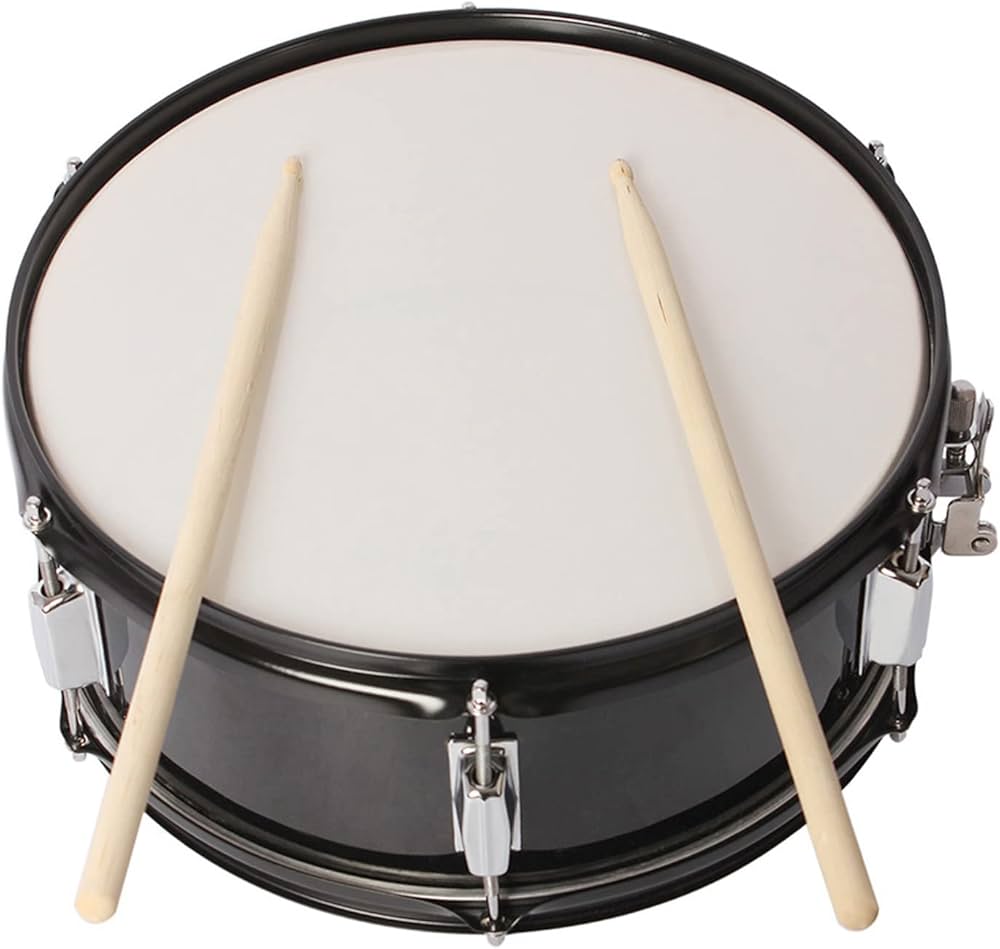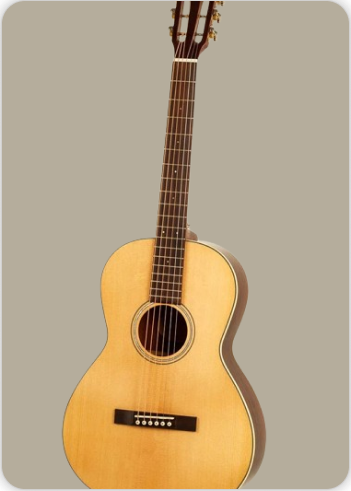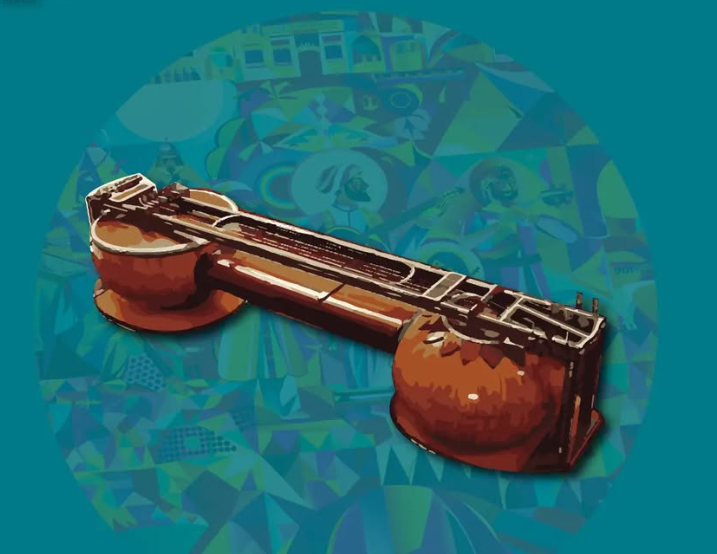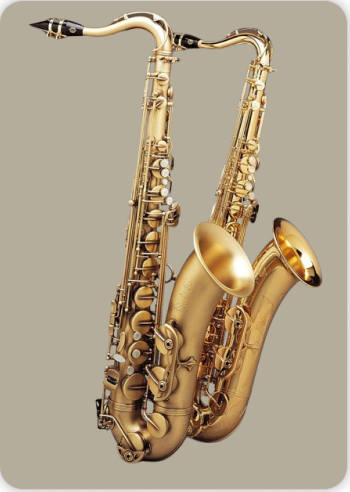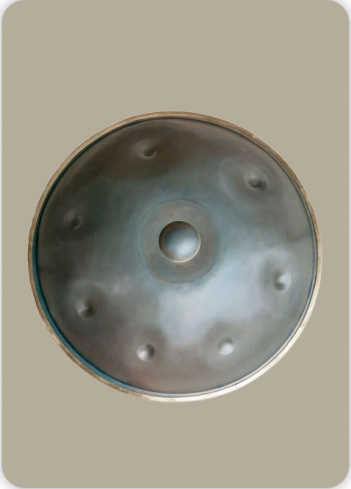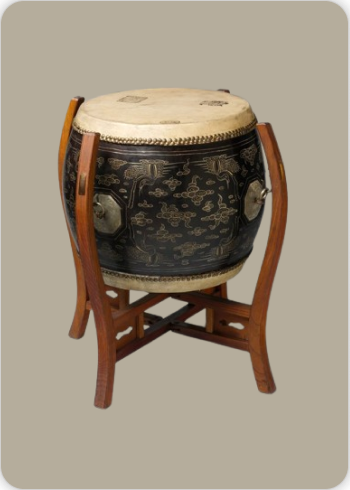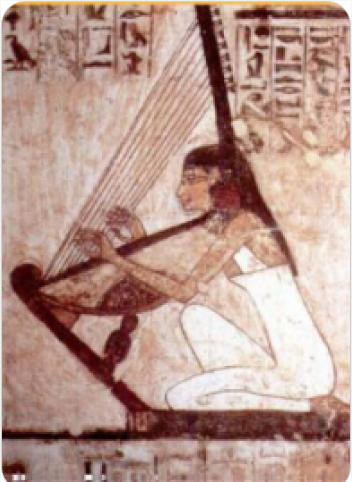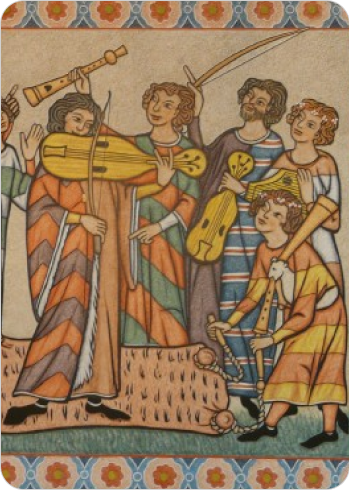Sagar veena
Plucked Instruments
Asia
Between 1901 and present
Video
The Sagar Veena is a unique and innovative plucked string instrument, developed specifically for the performance of North Indian Classical Music. Its name is derived from two words: “Sagar,” meaning ocean in Sanskrit, and “Veena,” a generic term for a family of stringed instruments prominent in the Indian subcontinent. The Sagar Veena was designed to embody the vastness and depth of the ocean through its sound, offering a musical experience that is rich, layered, and emotionally resonant. Unlike many traditional string instruments, the Sagar Veena is unfretted, which means it does not have the raised strips across the fingerboard that define pitches. Instead, it is played with a slide (often a crystal or glass ball), allowing for smooth, gliding transitions between notes. This technique enables the performer to achieve a vocal-like quality, closely mimicking the nuances and expressiveness of the human voice.
Type of Instrument
The Sagar Veena belongs to the family of chordophones, which are instruments that produce sound primarily by way of vibrating strings stretched between two points. Within the broader classification of chordophones, the Sagar Veena is most closely related to the plucked string instruments of the Indian subcontinent, particularly those used in classical music traditions. It shares similarities with other veena-type instruments, such as the Vichitra Veena and the Chitra Veena (Gottuvadhyam), both of which are also unfretted and played with a slide. However, the Sagar Veena distinguishes itself through its unique construction, sound, and playing technique.
History and Origin
The Sagar Veena is a relatively recent addition to the world of musical instruments, having been developed in the late 20th century. Its origins can be traced to the South Asian subcontinent, specifically Pakistan, where it was conceived and brought to life by Raza Kazim, a prominent lawyer and philosopher. The instrument was first developed in 1970, making it a product of the 20th century and a reflection of the ongoing evolution of musical traditions in the region. The creation of the Sagar Veena was motivated by a desire to expand the expressive capabilities of string instruments used in North Indian Classical Music. Raza Kazim sought to address limitations he perceived in existing instruments, particularly in terms of their ability to produce a wide range of timbres and resonances. Drawing inspiration from traditional veena instruments such as the Vichitra Veena and the Chitra Veena, Kazim embarked on a process of experimentation and innovation that ultimately led to the development of the Sagar Veena. The instrument’s evolution spanned several decades, with multiple prototypes and versions being created and refined over time. Kazim’s daughter, Noor Zehra, played a crucial role in the instrument’s development, serving as its primary performer and collaborator. Her feedback and expertise as a musician informed many of the design decisions that shaped the final form of the Sagar Veena. Since its inception, more than seventeen versions of the instrument have been made, each incorporating advancements in materials, construction techniques, and acoustic design.
The Sagar Veena’s development took place at the Sanjan Nagar Institute of Philosophy and Arts in Lahore, Pakistan, where it continues to be studied, researched, and refined. The instrument represents a fusion of traditional musical knowledge and modern innovation, reflecting the dynamic cultural landscape of South Asia in the late 20th and early 21st centuries. Although the Sagar Veena is a product of the Indian subcontinent, its impact and significance extend beyond regional boundaries. It stands as a testament to the enduring vitality of classical music traditions in South Asia, as well as the capacity for creative innovation within those traditions. The instrument’s unique sound and expressive potential have attracted the attention of musicians and audiences both within Pakistan and internationally, contributing to the ongoing evolution of global musical culture.
Construction and Physical Structure
The construction of the Sagar Veena is a testament to meticulous craftsmanship and innovative design. The instrument’s physical structure has evolved through a process of continuous experimentation and refinement, with each new version incorporating lessons learned from previous iterations. The result is an instrument that is both visually striking and acoustically sophisticated, capable of producing a wide range of sounds and resonances. At its core, the Sagar Veena consists of a large, hollow body with extended, circular resonators (tumbas) attached at both ends. These resonators are crafted from carefully selected materials, often involving a process in which gourds are cut into smaller pieces and then joined together to enhance resonance. The body of the instrument is typically made from high-quality woods, chosen for their acoustic properties and ability to transmit vibrations effectively. The instrument features a wooden soundboard, which serves as the primary surface for transmitting the vibrations of the strings. The bridge, which supports the strings and transmits their vibrations to the soundboard, is fitted with silver transmitters—a unique innovation that contributes to the instrument’s distinctive tonal qualities. The use of silver in the bridge is unprecedented in the construction of string instruments and reflects the commitment to exploring new materials and techniques in pursuit of the ideal sound.
The Sagar Veena is equipped with nine playing strings and two drone strings. The playing strings are arranged in three groups, each corresponding to a different octave range: Mandrasthan (bass), Madhyasthan (mid-range), and Tarasthan (highs). This arrangement allows the performer to access a wide range of pitches and timbres, facilitating complex melodic and harmonic explorations. The drone strings provide a continuous harmonic background, enriching the overall sound and supporting the melodic lines played on the main strings. One of the most distinctive features of the Sagar Veena is its lack of frets. Instead of pressing the strings against raised strips to define pitches, the performer uses a slide—often made of crystal or glass—to manipulate the pitch and timbre of the notes. This technique allows for smooth, continuous transitions between notes (meend), enabling the performer to achieve a vocal-like expressiveness that is difficult to replicate on fretted instruments.
The instrument is played while seated on the floor, with the Sagar Veena positioned horizontally in front of the performer. The musician sits in the middle of the instrument, using one hand to slide the crystal ball along the strings and the other to pluck the strings with a specially designed brass plectrum. The shape of the plectrum is carefully crafted to eliminate unwanted noises, such as screeching, and to facilitate the production of clear, resonant tones. The dimensions and proportions of the Sagar Veena have been finalized through years of experimentation and testing. Every aspect of the instrument’s design—from the length and curvature of the body to the thickness of the soundboard and the materials used—has been carefully considered to optimize its acoustic performance. The result is an instrument that is not only visually impressive but also capable of producing a rich, dynamic, and emotionally resonant sound.
Types of Sagar Veena
Since its inception in 1970, the Sagar Veena has undergone numerous modifications and refinements, resulting in the creation of multiple versions or types. Each new version reflects advancements in materials, construction techniques, and acoustic design, as well as the evolving musical and philosophical vision of its creator, Raza Kazim. The earliest prototypes of the Sagar Veena were relatively simple in structure, drawing inspiration from traditional veena instruments such as the Vichitra Veena and the Chitra Veena. Over time, however, the instrument’s design became increasingly complex and sophisticated, incorporating new materials (such as silver transmitters on the bridge) and innovative construction methods (such as the segmented and rejoined resonators). As of today, more than seventeen versions of the Sagar Veena have been created, each with its own unique characteristics and improvements. Some versions have focused on enhancing the instrument’s resonance and sustain, while others have sought to expand its range of timbres and pitches. The ongoing process of experimentation and refinement has resulted in an instrument that is highly adaptable and capable of meeting the diverse needs of performers and composers.
Despite these variations, all versions of the Sagar Veena share certain core features: an unfretted fingerboard, nine playing strings, two drone strings, a large resonant body with extended tumbas, and a focus on producing a wide range of timbres and resonances. The instrument’s design continues to evolve, with each new version building on the successes and lessons of its predecessors. In addition to the physical variations in the instrument itself, the Sagar Veena has also inspired the development of new playing techniques and approaches to musical performance. The instrument’s unique capabilities have encouraged performers to explore new ways of interacting with sound, pushing the boundaries of traditional musical expression and opening up new possibilities for artistic innovation.
Characteristics of the Sagar Veena
The Sagar Veena is distinguished by a number of unique characteristics that set it apart from other string instruments. One of its most notable features is its ability to produce a wide range of timbres and resonances, enabling the performer to explore a vast palette of musical colors and emotions. This capability is rooted in the instrument’s innovative design, which incorporates nine playing strings divided into three groups (bass, mid-range, and highs) and two drone strings that provide a continuous harmonic background. The instrument’s unfretted fingerboard and use of a slide (crystal or glass ball) allow for smooth, gliding transitions between notes (meend), closely mimicking the expressiveness of the human voice. This technique enables the performer to achieve subtle variations in pitch and timbre, adding depth and nuance to their musical interpretations. The Sagar Veena’s sound is often described as deep, reverberating, and capable of evoking a sense of introspection and tranquility. Another key characteristic of the Sagar Veena is its complex harmonic structure. The combination of playing and drone strings, along with the instrument’s resonant body and carefully crafted bridge, produces a rich tapestry of overtones and harmonics. This complexity gives the instrument its distinctive, layered sound, which is both powerful and delicate.
The Sagar Veena is also notable for its adaptability and versatility. Its design allows for a wide range of playing techniques and musical styles, making it suitable for both traditional and contemporary compositions. The instrument’s evolving construction and ongoing experimentation have ensured that it remains at the forefront of musical innovation, continually expanding the possibilities for artistic expression. In terms of performance, the Sagar Veena is typically played while seated on the floor, with the instrument positioned horizontally in front of the performer. The musician uses one hand to slide the crystal ball along the strings and the other to pluck the strings with a specially designed brass plectrum. This playing technique requires a high degree of skill and sensitivity, as the performer must carefully control the pressure and movement of the slide to achieve the desired sound.
The Sagar Veena’s ability to produce prolonged, seamless gliding sounds sets it apart from other string instruments, such as the sitar, which has more limited capabilities in this regard. The instrument’s design also eliminates unwanted noises, such as screeching, ensuring that the sound remains clear and resonant. Finally, the Sagar Veena is more than just a musical instrument; it is a product of philosophical inquiry and artistic vision. Its creation was motivated by a desire to explore the fundamental nature of sound and its impact on human emotions and consciousness. The instrument’s unique characteristics reflect this vision, offering performers and listeners alike the opportunity to engage in a process of deep, dynamic interaction with music.
Playing Techniques and Sound Modifications
The Sagar Veena is played using a technique similar to that of the Vichitra Veena or Mohan Veena, involving sliding a crystal ball or another object across the strings at one end while simultaneously plucking the strings at the other end with a plectrum. This sliding action allows the player to produce and control a wide range of musical sounds, including subtle variations in timbre, resonance, and harmonics. Unlike many string instruments where pitch and volume are the primary focus, the Sagar Veena emphasizes dynamic-layered timbres and resonances, which convey deeper musical meanings. The player must exercise delicate control over the pressure and tension applied through the crystal ball and the plectrum, making the playing technique highly nuanced and sophisticated. The instrument features nine playing strings that represent the three asthans or registers of Indian classical music: Mandrasthan (bass), Madhyasthan (mid-range), and Tarasthan (highs), with three strings dedicated to each register. Additionally, there are two drone chords. The Sagar Veena’s construction allows the vibrating part to be separated from the resonating components, enabling the latter to resonate freely without tension from the strings, which enhances the sound quality. The tumbas (resonating gourds) are uniquely crafted by cutting and rejoining smaller pieces to improve resonance further.
The right hand plucks the strings using a plectrum, while the left hand manages the sliding of the crystal ball to produce glides and microtonal variations characteristic of Indian classical music. This combination allows the instrument to express the gayaki (singing) style with fluid gamakas (ornamentations). The playing technique has evolved alongside continuous upgrades to the instrument, and it remains under refinement to fully realize its potential as a vehicle for intricate musical expression.
Famous Compositions
While the Sagar Veena is a relatively new and rare instrument, compositions played on it generally follow the structure and style of Indian classical music ragas. The instrument’s unique ability to produce layered timbres and resonances makes it well-suited for elaborate raga explorations, where the artist can emphasize the subtle emotional nuances of the raga through microtonal slides and harmonic overtones. Because the instrument is still in development and has only a handful of practitioners, there are no widely known traditional compositions exclusive to the Sagar Veena. Instead, its repertoire consists mainly of adaptations of classical ragas and new compositions created by pioneering players, designed to showcase the instrument’s distinctive sound textures and expressive capabilities.
Most Influential Players
The Sagar Veena is closely associated with Noor Zehra, a pioneering musician who is currently the only known player of this instrument. She has been instrumental in developing the Sagar Veena’s design and playing technique, pushing the boundaries of its musical expression. Noor Zehra’s performances have brought attention to the instrument, highlighting its unique sound and potential within the realm of Indian classical music. Her work has inspired interest in the Sagar Veena both in Pakistan and internationally, as she continues to refine the instrument and its playing style. Due to the rarity of the instrument, Noor Zehra remains the central figure in its history and evolution.
Historical Performances or Concerts
Given the Sagar Veena’s novelty and limited number of players, its historical performances are few but notable for their uniqueness. Noor Zehra has performed in various concerts and music festivals, where the Sagar Veena’s distinct tonal qualities and playing techniques have been showcased to audiences unfamiliar with the instrument. These performances often emphasize the instrument’s ability to evoke deep emotional responses through its resonant and layered soundscape. While not yet a staple in mainstream classical music concerts, the Sagar Veena’s appearances have been met with curiosity and admiration, marking important milestones in introducing this innovative instrument to the wider musical community.
Maintenance and Care
The Sagar Veena, like other veena family instruments, requires careful maintenance to preserve its delicate structure and sound quality. Its construction involves wooden components, resonating gourds, and metal strings, all of which need regular attention. Players must ensure the strings are kept clean and properly tuned to maintain the instrument’s tonal balance across the three registers. The crystal ball used for sliding must be handled carefully to avoid damage to the strings and the instrument’s surface. The resonating gourds, being crafted from joined pieces of wood, require protection from moisture and temperature fluctuations to prevent warping or cracking. Regular inspection and gentle cleaning of the wooden body and bridge are essential to maintaining the instrument’s acoustic properties. Since the Sagar Veena is still evolving in design, its maintenance protocols may adapt as new materials and construction techniques are introduced.
Interesting Facts and Cultural Significance
The Sagar Veena represents a modern innovation within the traditional Indian classical music framework, blending ancient musical concepts with contemporary instrument design. Its emphasis on intangible sound qualities such as timbre, resonance, and harmonics reflects a deep philosophical inquiry into the nature of musical sound and its emotional impact. One of the most interesting aspects of the Sagar Veena is its unfretted design, which allows for continuous sliding between notes, enabling a highly expressive and vocal-like style of playing. This quality makes it particularly suited for the gayaki ang, or singing style, of Indian classical music. Culturally, the Sagar Veena carries significance as a symbol of musical creativity and innovation originating from Pakistan. It bridges traditional musical heritage with modern artistic exploration, offering a new voice within the classical music tradition. Its creation and development by artists like Noor Zehra highlight the ongoing evolution of South Asian musical instruments and the enduring importance of classical music as a living, dynamic art form.
The instrument’s unique sound and playing method also contribute to its identity as a rare and precious musical treasure, inspiring musicians and audiences alike to explore new dimensions of musical expression.
FAQ
What is the construction and material used in the Sagar Veena?
The Sagar Veena is made from seasoned tun wood with a large resonating gourd and wooden fretted neck. It features sympathetic strings and main playing strings similar to the rudra veena. It is played with a slide and finger picks. The design allows for rich resonance and long sustain.
What are the features and sound characteristics of the Sagar Veena?
The Sagar Veena produces deep, meditative tones with rich harmonic overtones. It has a range of over three octaves and allows intricate meends (glides) due to its fretless design. The instrument supports both melodic and drone textures. Its sound is ideal for Indian classical and experimental music.
Who are the prominent players and what is the history of the Sagar Veena?
The Sagar Veena was developed in Pakistan by Raza Kazim in the late 20th century. His daughter Noor Zehra Kazim is the only known performer of the instrument. It was designed to blend Indian classical aesthetics with new sonic possibilities. The instrument remains rare and experimental.
 Links
Links
References
Other Instrument
Categories

